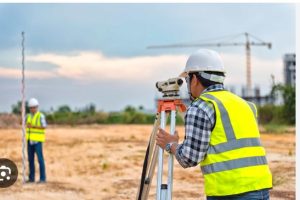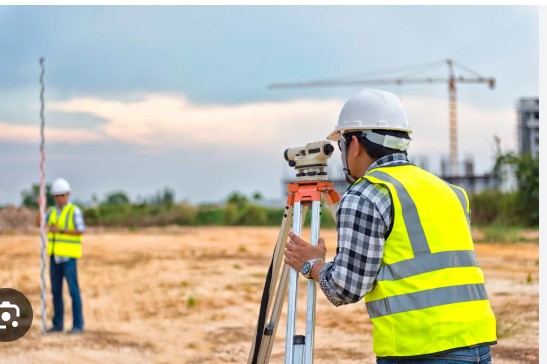
Before you build your dream home, install a new fence, or divide a large piece of property, you need a clear understanding of your land’s boundaries. This is where professional land surveying services come in. Understanding what a land surveyor does and why their work is so important can save you from costly legal disputes, construction delays, and headaches down the road. This guide will walk you through what land surveying is, the different types of services available, and how to find the right professional for your project.
What Are Land Surveying Services?
Land surveying is the art and science of measuring and mapping a piece of land. A professional land surveyor uses a combination of specialized equipment, mathematical principles, and legal knowledge to determine the precise boundaries of a property. The final result of their work is typically a detailed map or report, often called a plat, that shows the property’s dimensions, features, and legal boundaries.
This process is fundamental for any land development or transaction. It provides a legal record of a property’s lines, which is crucial for real estate sales, construction projects, and resolving disputes with neighbors. Without an accurate survey, property owners risk building on someone else’s land or violating local zoning regulations.
Common Types of Land Surveying Services
The field of land surveying is broad, with various specializations tailored to specific needs. While there are many types of surveys, most property owners will encounter one of the following.
Boundary Surveys
This is the most common type of survey requested by homeowners. A boundary survey’s primary goal is to locate and mark the corners and boundary lines of a parcel of land. This service is essential when buying or selling property, building a fence, or resolving a disagreement with a neighbor about where your property ends and theirs begins. The surveyor will research historical records and deeds before visiting the site to locate existing markers and set new ones if necessary.
Topographic Surveys
A topographic survey goes beyond boundary lines to map the three-dimensional features of the land. It shows the natural and man-made features, including hills, valleys, streams, trees, buildings, and roads. This type of survey is critical for engineers, architects, and builders who need to understand the land’s contours and elevation for drainage, grading, and site design. If you’re planning a major landscaping project or new construction, a topographic survey provides the foundational data needed for a successful build.
ALTA/NSPS Land Title Surveys
The American Land Title Association (ALTA) and the National Society of Professional Surveyors (NSPS) have established a set of rigorous standards for this comprehensive survey. An ALTA/NSPS survey is often required for commercial real estate transactions and is one of the most detailed surveys available. It combines elements of a boundary survey, a topographic survey, and a title search. The final plat will show property boundaries, easements, rights-of-way, encroachments, and any other relevant information that could affect the property’s title.
Construction Staking (Layout) Surveys
Before construction begins, builders need to know exactly where to dig, place foundations, and build structures. A construction staking survey translates the architect’s plans into physical points on the ground. Surveyors will place stakes to mark the precise location of building corners, roads, utility lines, and other planned features. This ensures the project is built according to the approved design and within the property’s legal boundaries.
When Do You Need Land Surveying Services?
Many property owners are unsure when they need to hire a land surveyor. Here are a few common scenarios where professional land surveying services are not just recommended, but often required.
- Buying or Selling Property: A recent survey protects both the buyer and the seller by providing a clear, legal definition of the property being transacted. It can uncover issues like encroachments that may not be obvious from a simple walkthrough.
- Building or Renovating: Before you add an extension to your house, build a new garage, or even install a swimming pool, you need a survey to ensure your new construction complies with local zoning laws and setback requirements.
- Resolving Boundary Disputes: If you and your neighbor disagree on the location of your shared property line, a boundary survey provides an impartial, legally binding answer to settle the argument.
- Subdividing Land: If you own a large tract of land and wish to divide it into smaller lots for sale or development, a surveyor is needed to create the new legal descriptions and plats for each parcel.
- Applying for a Mortgage: Many lenders require an up-to-date survey before approving a mortgage, especially for commercial properties or large rural tracts.
Finding the Right Land Surveyor
Choosing the right professional is crucial for getting accurate results. Start by looking for a licensed and insured land surveyor in your state. Licensing ensures the individual has met specific educational and experience requirements and is legally authorized to perform surveys.
Ask for recommendations from real estate agents, attorneys, or title companies, as they frequently work with surveyors. It’s also wise to get quotes from multiple firms. When comparing them, don’t just look at the price. Consider their experience with your type of project, their local reputation, and their estimated timeline for completion.
The Value of Professional Surveying
Investing in professional land surveying services is a critical step in protecting one of your most valuable assets. It provides certainty, prevents future legal battles, and ensures that any development on your property is done correctly and legally. By understanding the role of a land surveyor and knowing when to call one, you can proceed with your property plans with confidence.
If you have an upcoming project or simply want to understand your property better, reaching out to a qualified land surveyor is the best first step.
 :
https://insidetechie.blog/
:
https://insidetechie.blog/

